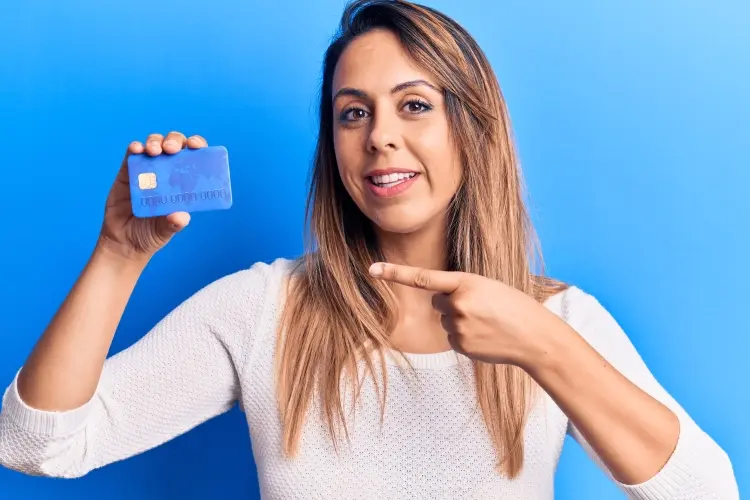by Homer Dennis
Gone are the days when payment for goods and services is made with physical cash. With technological advancements that greeted the business world, merchants can now make sales from their comfort zone. Also, merchants have been able to digitalize their business. By digitalizing their business, the merchant's customer base has increased tremendously.
Contents
All these benefits have become possible due to the introduction of credit or debit cards for making payment. Credit or debit cards are a payment tool widely accepted by merchants and popularly used by all customers. The credit or debit card is devoid of geo-restrictions - meaning that you can use it to make a payment from any location in the world. That said, the credit or debit card has a lot of entities on it. When you check out the credit card, vital information is available at your disposal. This information includes the card number, expiry date, CVV, and the contact details of the bank or financial institution that issued the card. The card number has a lot of information and also performs fantastic functions when the credit or debit card is used for business transactions.
That said, the first six to eight digits of the card number represent the bank identification number (BIN), also called the issueridentification number (IIN). With the IIN, you can access information like the kind of card and the issuer of the payment card. The IIN also helps merchants verify, authenticate, and ensure enough funds in the customer's account before transactions are authorized and cleared. The increasing demand for credit and debit cards has resulted in the depletion of the six-digit IIN number on the credit card. Hence, banks and financial institutions have upgraded their card issuing system to commence the issuance of cards with an 8-digit IIN number. However, these current changes are little known to the card users and other entities concerned with the changes. Therefore, today, I will be telling you all you need to know about the changes that are happening to the issuer identification number (IIN) and the frequently asked questions associated with the changes.
The card's INN is found in the long number at the front of your credit or debit card. The first six digits on the card number are the INN. The INN is a standard numbering system globally recognized and used to identify the bank and other institutions that issued the credit or debit card in a closed environment or international interchange. The INN number is unique to each card issuer.

The structure of the IIN number is defined within the ISO/IEC/ 7812-1. This number identifies the card and issuer. It also identifies the numbering system. The INN number was developed by the joint technical committee (JTC), subcommittee, and cards and personal information. With total consideration of the current version of ISO/IEC/ 7812-1, the IIN is defined as a fixed number of six digits. The INN standard also defines the PAN (primary account number), which is the entire digits of the card number. The PAN number varies from 8 to 19 digits.
There are two types of INN you will find on your credit or debit card. These two types of INN performs the same function. Hence, you need not exercise fear when you have any of them on your credit or debit card number.
This is a type of IIN that comprises of eight-digit numbers. Each credit or debit card issuer has one IIN number unique to them, excluding its membership in existing card schemes. So, only one IIN is assigned to each bank or financial institution. This means that all customer that get their credit card from a bank or financial institution will have the same IIN (first eight digits). However, their account number and other information will be different. The INN is used to identify the issuer and also used when detailed information is shared between the issuer and acquirer for settlement and clearing during business transactions. Furthermore, no IIN will be issued to identify the geographic location, products, or services.
The closed environment is a type of IIN that has nine-digit numbers. Closed environment IIN is used for national purposes only. The closed environment IINs are vital to carrying out transactions when the issuer of your payment card acquires its transactions, and the network of the issuer does not accept it. It is also used when the transaction is not processed or allowed on other cards except its own IIN.
As the global marketing space continues to expand and has also become digitalized, most business transactions are now carried out with the use of credit or debit cards. The increase in demand for the credit card has also increased the number of credit cards issued to cardholders. The increase in credit card issued also increases the number of IIN used. The exponential increase in the number of IIN numbers results in the depletion of the six digits IIN. Hence, there is a need to increase the IIN number to eight digits. The increase in the number IIN will not affect the PAN. It will still vary between 10 to 19 digits. The changes to the IIN was approved by the ISO members and published in 2017. the changes approved include the following.

1. The assignment of the eight-digit IINs to all banks or financial institutions that apply for a single or block of IINs is carried out by registration authority (RA).
2. The issuers that have gotten eight-digit IINs will still maintain a minimum of PAN length of 10 digits and a maximum of 19 digits.
3. The existing six-digits IIN on the credit card will be converted to a 100 eight-digit IINs. The vast majority of banks or financial institutions that have unused eight digits IIN numbers should return them to the registration authority (RA).
4. All issuers, merchants, and other entities involved must adjust their payment processing system to avoid misrouting or payment processing errors. They can do this by integrating the six-digits to their payment processing system. The step will also benefit the customers because there will be no risk when making a payment with their debit of a credit card.
The issuer identification number is unique to all banks or other financial institutions that issue credit or debit cards to customers. The IIN BIN Lookup helps merchants to confirm the identity of the purchaser when performing transactions online.
The validation of all information supplied by the purchasers is essential to all merchants. When the purchaser's information is verified and validated by the merchant, transactions can become authorized and cleared.
The process of payment with the credit card is faster and quicker. This is because validating and verifying all information given by the purchaser takes only a few seconds. If your transaction is accepted, it will take just a few seconds to get it authorized and cleared. If the credit card is not valid or the information supplied by the purchaser is not genuine, the payment process is declined. So, all these processes take just a few seconds to become completed.
When a purchaser makes a payment for goods and services with their credit card, they are required to enter their detailed information, including their card number, CVV, expiry date, and pin code. Once the card number is entered into the merchant's payment system, the IIN List gives details about the kind of card, the validity of the card, and other valuable information. If the payment card is valid, the payment becomes authorized and cleared. However, if the purchaser is a fraudster, the credit card information will not be valid. Hence, the payment will be declined.

The table below summarizes the FAQ on the changes of the Issuer identification number (IIN)
| Questions | Answer |
| Why the need for migration? | Migration becomes necessary because of the exhaustion of 6-digit BINs. |
| Are clients charged for migration | No, the credit union is saddled with the responsibility of performing the migration. |
| Will the client's unexpired 6-digit BIN card is useful after migration. | Yes, they can still make payment before the expiry date. |
| What happens if I fail to migrate to 8-digit BINs? |
|
| When will the migration processes elapse? | The migration process will elapse by April 2023. |
The issuer identification number (IIN) is digits that are essential to all merchants and issuer of the credit or debit cards. The digits of the IIN is currently being changed from six digits to eight digits - due to the depletion of the six-digit IIN. Today, I have discussed all you need to know about the changes made to the IIN.

About Homer Dennis
Born and raised in an environmentally conscious family, Homer developed a strong awareness of the impact of human activities on the planet from a young age. This early exposure to eco-friendly practices and sustainability principles inspired her to pursue a career focused on promoting renewable energy and advocating for a more sustainable lifestyle.
 |
 |
 |
 |
Check These Out
Your lucky day! Visit FREE Gifts GiveAways for it. Whitelist the AdBlocker to get more Free Rewards
Then click anything below to proceed
 |
 |
 |
 |